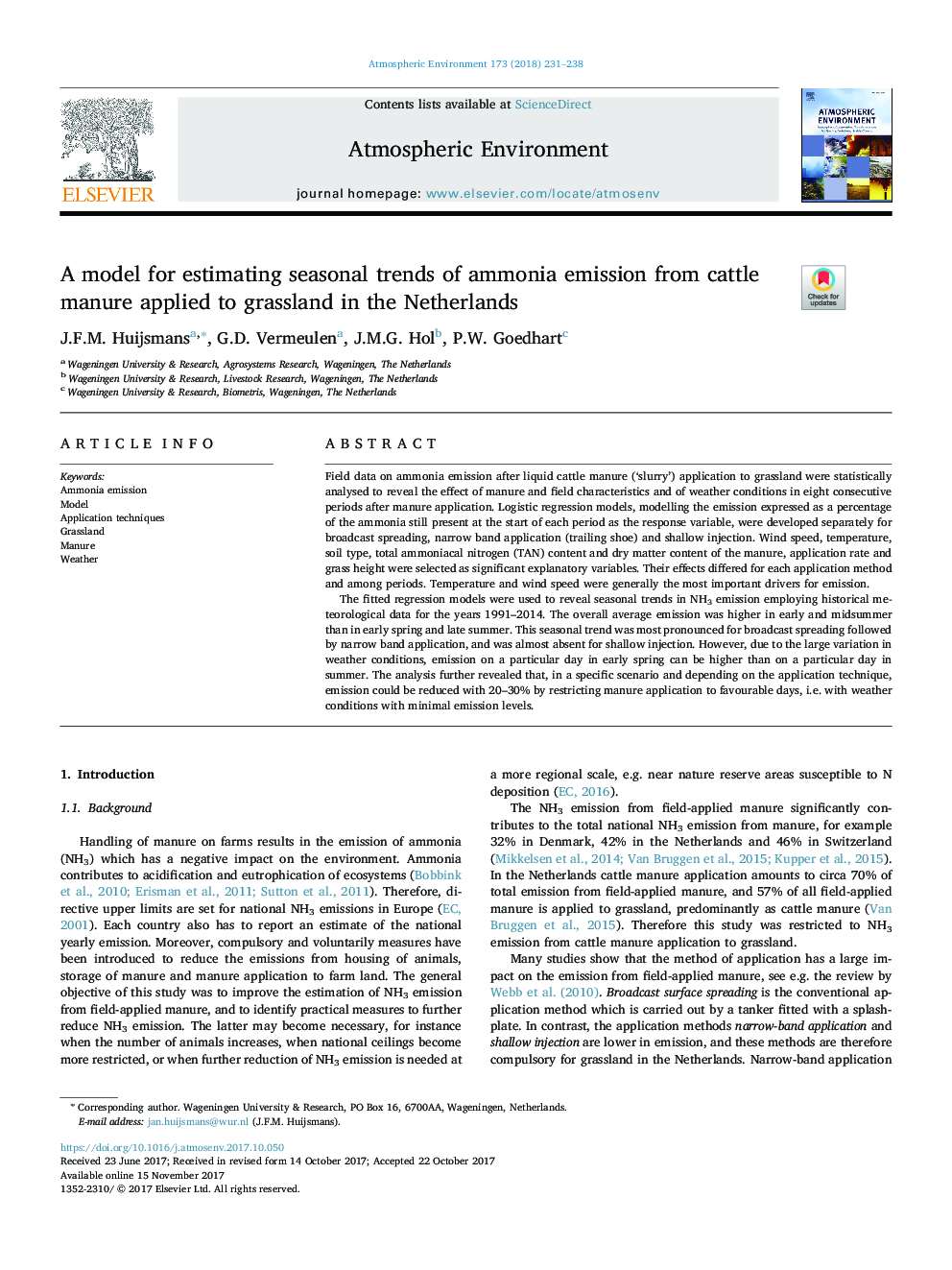| Article ID | Journal | Published Year | Pages | File Type |
|---|---|---|---|---|
| 8864285 | Atmospheric Environment | 2018 | 8 Pages |
Abstract
The fitted regression models were used to reveal seasonal trends in NH3 emission employing historical meteorological data for the years 1991-2014. The overall average emission was higher in early and midsummer than in early spring and late summer. This seasonal trend was most pronounced for broadcast spreading followed by narrow band application, and was almost absent for shallow injection. However, due to the large variation in weather conditions, emission on a particular day in early spring can be higher than on a particular day in summer. The analysis further revealed that, in a specific scenario and depending on the application technique, emission could be reduced with 20-30% by restricting manure application to favourable days, i.e. with weather conditions with minimal emission levels.
Related Topics
Physical Sciences and Engineering
Earth and Planetary Sciences
Atmospheric Science
Authors
J.F.M. Huijsmans, G.D. Vermeulen, J.M.G. Hol, P.W. Goedhart,
